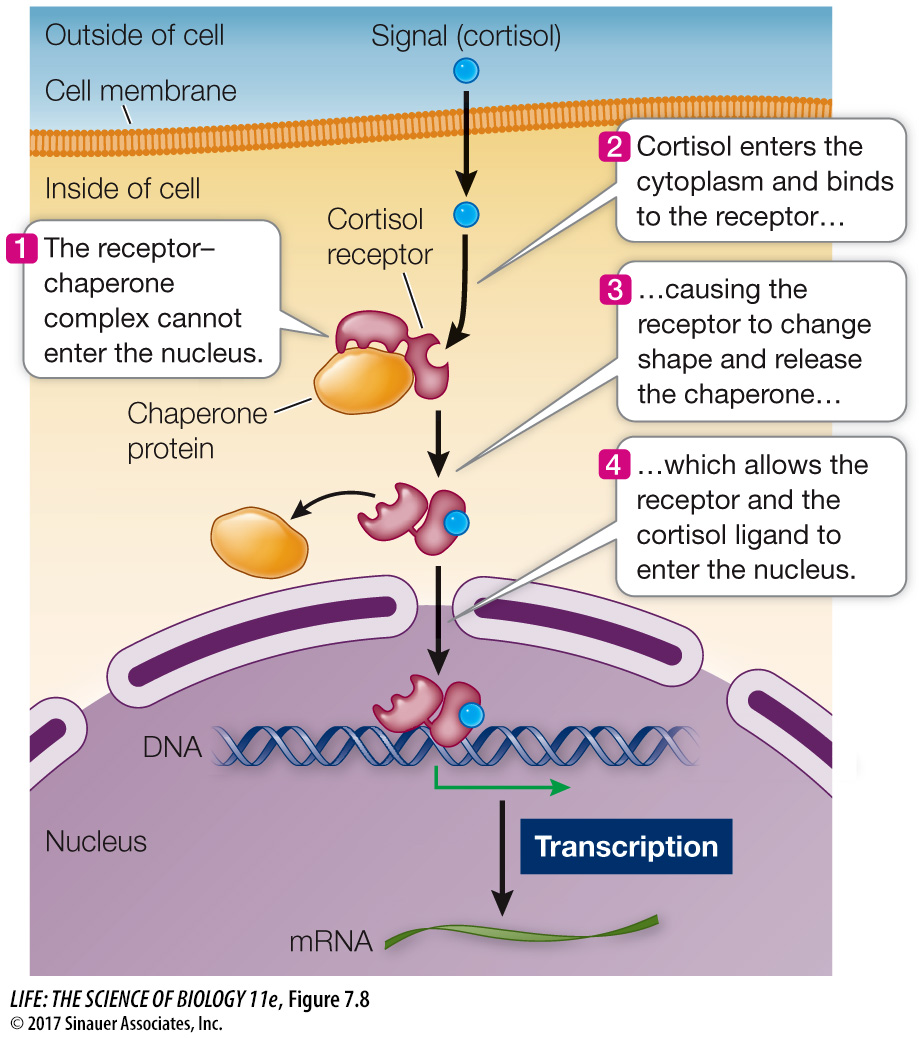Intracellular receptors are located in the cytoplasm or the nucleus
Intracellular receptors are located inside the cell and respond to physical signals such as light (e.g., some photoreceptors in plants) or chemical signals that can diffuse across the cell membrane (e.g., steroid hormones in animals). Many intracellular receptors are transcription factors. Some are located in the cytoplasm until they are activated; after binding their ligands, these transcription factors move to the nucleus where they bind to DNA and alter the expression of specific genes. A typical example is the receptor for the steroid hormone cortisol. This receptor is normally bound to a chaperone protein that blocks it from entering the nucleus. Binding of the hormone causes the receptor to change its shape so that the chaperone is released (Figure 7.8). This release allows the receptor to enter the nucleus, where it affects DNA transcription. Another group of intracellular receptors is always located in the nucleus, and their ligands must enter the nucleus before binding.
